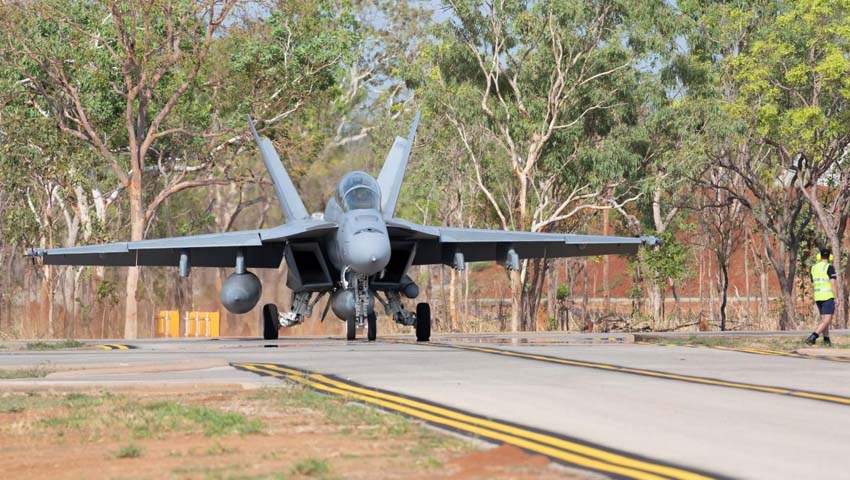The aircraft demonstrated their capability in the Katherine region of the Northern Territory as part of the RAAF exercise.
The RAAF’s No. 82 Wing F/A-18F Super Hornets and No. 2 Squadron E-7A Wedgetail aircraft displayed their air power during Exercise Gauntlet Strike in the Katherine region of the Northern territory from 26 November to 9 December.
The exercise marked the final qualification activity for operational conversion courses for aircrew trainees, including pilots, intelligence officers, mission commanders, surveillance and control officers, electronic support measure operators and systems officers.
The Executive Officer No. 82 Wing, Wing Commander Trevor Andrews, said the exercise enabled trainees to test their skills in a notional conflict scenario.
“The exercise included the employment of precision weapons on training ranges for our Super Hornet pilots and the Wedgetail crews conducted air battle management in a contested environment scenario,” WGCDR Andrews said.
“Exercise Gauntlet Strike has prepared Air Force personnel to plan and conduct missions, ensuring they are ready and qualified to deploy in defence of Australia and its interests.”
Flying Officer Peter, a trainee Super Hornet weapons systems officer, said Exercise Gauntlet Strike challenged trainees.
“All of our training in the lead-up to the exercise was very segmented – here’s air-to-air, now put that aside and here’s air-to-ground,” he said.
“But this exercise brought everything together in one mission.
“The self-escort strike scenarios were dynamic, our planning times were condensed, and you didn’t know how things were going to play out, so you had to be flexible.”
He added: “We had to prove that we could safely and legally carry out all key mission priorities, from planning, taking off, fighting our way in, dropping bombs, fighting our way out, and coming back home.
“It was really tough, but very rewarding.”
Flying Officer Declan, a trainee Super Hornet pilot, said the exercise put theory into practice.
“We got to drop real bombs for the first time,” he said.
“It was also the first time we’d worked through scenarios where I’d be dealing with an air picture in the front seat, while the guy in the back would be working to find the target.
“Working in a split cockpit like that, with No. 2 Squadron and No. 114 Mobile Control and Reporting Unit feeding us battlefield data, was an awesome first for us.”
Flying Officer Joshua, a trainee air battle manager on a Wedgetail, said the exercise strengthened interoperability between the squadron and personnel from Air Combat Group.
“We operated with 82 Wing, providing overall battlefield situational awareness and control,” he said.
“Having multiple squadrons from different bases operating together in unfamiliar airspace afforded us the rare opportunity to conduct holistic mission planning and debriefing.”
Flying Officer Declan added that the trainees developed a deeper appreciation of the team effort required for collective training activities.
“I’m very humbled by the sheer number of resources committed to getting a few jets off the ground each day for the sake of our training,” he said.
Flying officer Peter agreed: “Administration, logistics, maintenance – it’s eye-opening just how many people are required to get us in the air, especially with COVID-19, and I’ll never forget that.”
[Related: Allied interoperability on display with global F-35 exercises]









